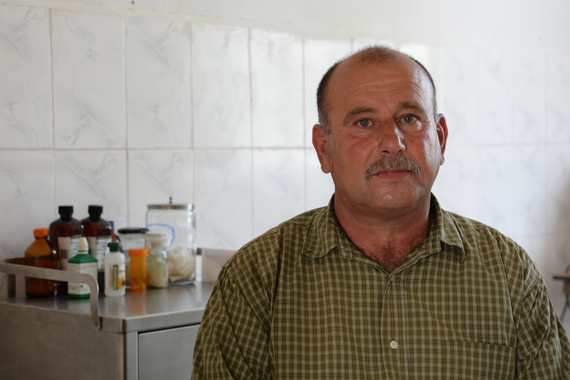
Physician—and refugee—Haig Khatchadourian. (Photo: Knar Babayan)
BY CHRIS BOHJALIAN
(Originally posted on Burlington Free Press, October 16, 2016)
For most of America, the heartbreaking faces of Syrian refugees this year have belonged to children. We have seen them drowned and we have seen them stunned into silence by warfare and covered in blood. (We’ve also seen them likened to Skittles, but that appalling analogy belongs only to the Trumps.)
At the moment, however, when I put a real face on the refugee crisis I see a balding 50-year-old man with gentle green eyes and a salt and pepper mustache. I met him on the second to last day in August in Ishkhanadzor, a modest village in Nagorno-Karabakh, the fledgling Armenian republic in the Caucasus that is still struggling for recognition. Ishkhanadzor is about 15 miles north of the Araxes River and the border with Iran. Among the town’s 360 residents is one physician, Haig Khatchadourian, a soft-spoken neuropathologist who now works as a general practitioner in the village’s seven-room clinic. He is also a refugee.
In the summer of 2014, ISIS fighters from Tunisia, Libya, and Iraq came to his summer home in Tal Hmedy, a town in northeastern Syria, and took him by force to their administrative building and court. Khatchadourian does not recall the date, but he remembers it was two in the afternoon and his three daughters — all between 12 and 14 years old then — were present. He told the girls that if he did not return home that night, they should take the bus to their relatives in the city of Al-Qamishli. At the court, ISIS administrators demanded that he renounce his Christianity, telling him that he would be brought to the center of the village and executed if he didn’t.
“I expected to be beheaded,â€
